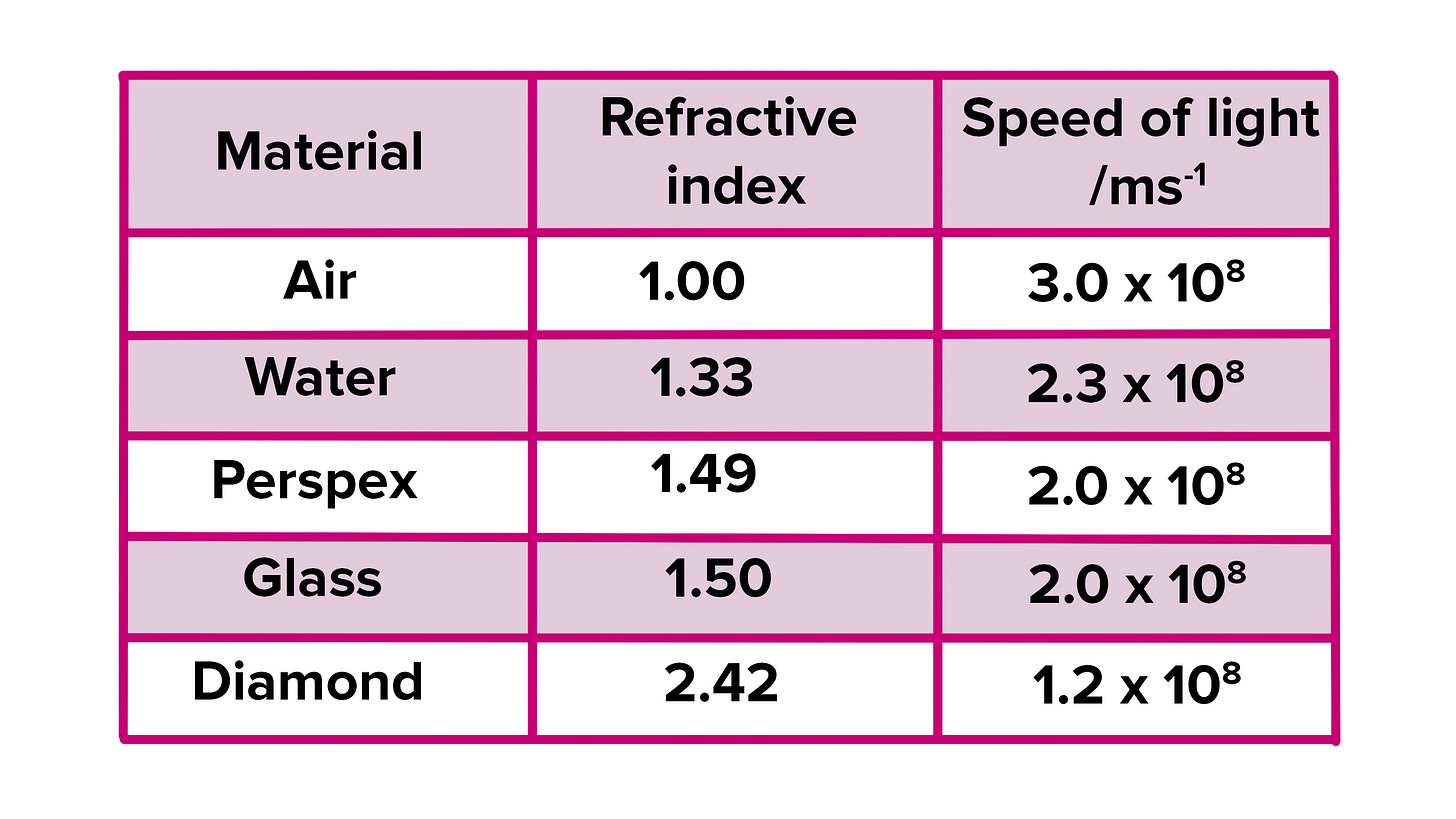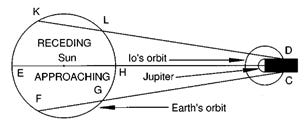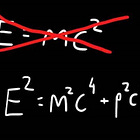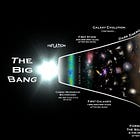The 'Speed of Light' is probably not right: an introduction.
If the speed of light is wrong, the impact on modern science and cosmology cannot be overstated.
(The speed of light is never constant)
Introduction
The speed of light is a problem for ‘The Science’. If the speed of light is inconstant in space and time, the entire edifice of modern cosmology including ‘Relativity’ is destroyed. Other posts in this substack have adumbrated the issues with the speed of light in the context of what is wrong with modern physics and cosmology. To further understand the importance of this issue we will provide 3 posts: a brief history of the speed of light, the ignored and wrongly vilified Sagnac experiment, and proofs and support as to why the speed of light dogma is incorrect, including personal experiments.
Through many years of study and experimentation with the speed of light, it is clear that the ‘settled consensus’ that the speed of light is ~186.000 miles per second in a vacuum is simply wrong. One obvious reason is that space is not a vacuum but full of material including radiation, rays, neutrinos, positrons, quantum fluctuations and other matter. No vacuum exists within the universe. Einsteins’ own General Relativity assumes an ether. Light speed obviously varies by medium including in space and in the opinion of many cannot even be measured.
There are 3 models which attempt to explain the composition of light: waves, particles or photons and wave-particles. The details of these models can be dealt with later, and there is still debate within science as to ‘what is light’? These debates can be traced back to the 17th century and earlier. One’s ‘view’ of what light is composed of does not really impact the measurement of light per se. We are concerned here with the speed of light and not necessarily what constitutes light though that is an interesting and elucidating discussion.
The outcomes from the dogma
It is claimed that light speed is constant in a vacuum and only in a vacuum at a velocity of a rather precise 299,792.458 km per second. This claim is an immensely important position to take. It leads to 2 ineluctable outcomes which are found in ‘Relativity’ and are foundational for modern cosmology.
Time becomes dilated (each second becomes longer) when an observer is at relativistic motion with the observed frame of reference.
(this is incorrect, given that Relativity of motion and its assumptions are incorrect)
Length becomes shorter when an observer is travelling at relativistic motion.
(a ridiculous notion and thought experiment which has often been disproven)
What might well be true but is unrelated to the actual speed of light is that cosmological time could be different than Earth time due to gravity and the impact from our atmosphere versus space in which a ‘vacuum’ devoid of gravity or atmospheres is prevalent. This is rarely pursued within ‘The Science’ but would categorically efface the idea of long ages on Earth.
Bias
Let us start by stating that Einstein did not invent the speed of light as most are taught to believe. Einsteinian magic and wizardry propose that no physical and measurable reference points exist in our universe and that reality is not what our senses perceive. Did the train crash into the hill, or did the hill crash into the train? Such obfuscation is to be rejected. To wit:
Einstein never proved his assumption of ‘relative’ motion, which by itself is wrong. The Doppler effect (measuring the relative motion between a source and observer), means that we can measure the difference between acceleration and deceleration, and between motion and rest. Just because Einstein never bothered to measure absolute rest, does not mean that absolute rest does not exist. For example, there is the absolute motion of photons which Einstein ignored. If photons move with absolute motion, then the motion of matter must also be absolute.
Einstein concocted his theories to save the phenomena of a moving Earth from thousands of experiments which proved that no mechanical measurement of the Earth could be found. Many posts on this substack cover this. Based on Einstein’s and establishment-cosmology’s materialist bias, we can predict that at some point in time when real science is again undertaken, that the entire corpus of Relativity will be rubbished and rejected as it was when it was initially suggested. Many posts on this substack outline why this is true and if the speed of light is a false declaration, this will only hasten Einstein’s demise.
A brief history of light
In simplified terms, the following is a rough sketch of how the speed of light, over time, was discovered, measured and ‘accepted’ to be 186.000 miles per second or roughly 299.000 km per second. It should be noted that optical science was discovered and widely studied in 13th century in Europe and provided a platform and set of experimentations which was vital for those in the 17th century who endeavoured to understand light and how it operated.
Descartes, 1636:
In the 17th century, Descartes surmised that sound velocity is larger in dense materials than in air. Based on medieval designs he believed that the air was a ‘luminous phenomenon’, and that sound or light had ‘a tendency to motion’, without any transport of matter, which should take place ‘more easily’ in a dense transparent medium than in air. This could be considered a ‘wave’ model of transmission.
Galileo, 1638:
Galileo and his assistant stood on two distant hills, each holding a bright source of light which they covered and uncovered. The assistant covered one light and then uncovered it and Galileo calculated the speed of light by measuring the elapsed time until he witnessed his assistant’s light based on the distance between them. This was rather crude, and Galileo sagaciously declined to provide exact measurements of light speed, preferring descriptions such as ‘instantaneous’ or ‘nearly instantaneous’. The basis for his work can be found in experiments dating back to the 15th century.
Newton, 1666:
Following Descartes, Newton spent years engaged in optical experiments and believed that ‘light particles’ and not waves were affected by gravitational attraction and that there had to be a ‘force’ to modify the velocity of light in a certain direction. He thus introduces photons or the particle theory of light.
Christian Huygens, 1690:
The Dutch physicist elaborated on the ‘wave model’ asserting that light propagated via ‘wave fronts’. Huygens believed that when light emitted a smaller refraction angle, it implied a smaller velocity level. Light speed would also vary by the medium, with water for example, having a lower velocity than air. In 1849 Fizeau confirmed Huygens’ claim that the velocity of light is smaller in water. It should be noted that no one in the 17th century assumed that light passed through a ‘vacuum’ which literally means absolutely nothing, which does not exist in reality.
Ole Rømer, 1676:
Rømer was a Danish astronomer and was the first to measure the speed of light. He observed and calculated the orbital motion of Io, a satellite of Jupiter. Rømer determined that Io’s orbital period around Jupiter was approximately 1.7 Earth days and involved an eclipse when viewed from Earth. This eclipse varied with the relative motion of Earth to Jupiter or more precisely the Earth’s velocity compared to Jupiter.
Rømer measured the difference in the longest observed orbital period of Io and the shortest period to be 22 minutes. He explained that this was due to the finite speed of light. This difference in time corresponded to the time taken by light to traverse the diameter of Earth's orbit around the Sun. Rømer proposed that the speed of light could be derived by dividing the diameter of Earth’s orbit by 22 minutes. This yields 200.000 km per second, or roughly, 120.000 miles per second.
(From Shea 1998)
James Bradley, 1728:
As discussed in other posts here, Bradley used stellar aberration to calculate the speed of light, yet his methods were incorrect and wilfully fraudulent. Again, like Einstein, he was tyring to prove that the Earth moved. But let us take his observations at face value. Stellar aberration refers to the astronomical phenomenon when stars appear to be moving around their true position. In reality, the stellar aberration observed by Bradley was an infinitesimally small 1 arc per second which proves nothing. He claimed a 30-40 arc per second variation. Based on this fictitious claim Bradley used the angle of displacement measured from the Earth as well as the purported relative velocity of the Earth (this is tautological and poor science), to calculate the speed of light to be 301.000 km per second.
H. Louis Fizeau 1849:
One of the great inspirations for Einstein’s Relativity was Fizeau’s failure to find a moving Earth. Einstein wrote and said this himself. In 1849, in an experiment unrelated to Earth mobility, Fizeau constructed an ingenious toothed wheel to assess the speed of light. At one end by the wheel, he constructed a light source. At a distance of 8 km from the wheel he erected a mirror. As the wheel rotated, the light from the source would hit the mirror and return through a gap in the wheel, to the observer standing behind the light source.
Fizeau could adjust the angular speed of the wheel to experiment with measuring the speed of a light ray returning from the light source to the observer. Given the known distance between the wheel and mirror Fizeau calculated that the speed of light was 313,300 km/sec.
Leon Foucault, 1862:
Foucault’s experiment imitated that of Fizeau, but he employed rotating mirrors in the place of a toothed cog-wheel. Foucault issued a light beam or rays onto a distant rotating mirror, which then reflected the light onto a second fixed mirror nearby. This second fixed mirror would then redirect the light back to the first rotating mirror. Since this first mirror was constantly in rotation, the angle of the first beam of light hitting that mirror would be different than the angle of the second beam of light.
By doing this, Foucault was able to use the angle displaced by the mirror and its angular speed to calculate the speed of light to be 298.000 km per sec.
James Clerk Maxwell, 1860s:
Maxwell developed enormously complicated mathematics to support electromagnetism which has had a direct impact on theories related to light and light speed. His theories allowed different measurements using light electric permittivity (ε) and magnetic permeability (µ) constants, along with radio wave interferometer experiments.
20th century, various:
20th century measurements using Maxwell’s maths to measure the speed of light including:
Rosa and Dorsey in 1907 (299,788 km per sec);
Froome in 1958 (299,972.500 km per sec); and
Evenson et al in 1973 (299,972.457 km/sec)
Evenson et al setup:
Laser interferometry:
· a laser source with known frequency is used
· the wavelength of the laser is measured by determining the distance by which the stationary mirror needs to be moved to cause destructive interference
· the speed of light is then calculated by multiplying frequency x wavelength
The Bottom line
So far so good. It looks like the constant speed of light in a ‘vacuum’ is roughly 300.000 km per second. But hold on the story does not end there. We will investigate why these measurements and their conclusions, are incorrect in the next 2 posts.
=====
Related posts and sources
J. A. Van Ruler, Treatise on Light, Cambridge University Press, January 2016
J.H. Shea, Ole Rømer, the speed of light, the apparent period of Io, the Doppler effect, and the dynamics of Earth and Jupiter, American Journal of Physics 66, 561–569, 1998.













Excellent summary - please continue.